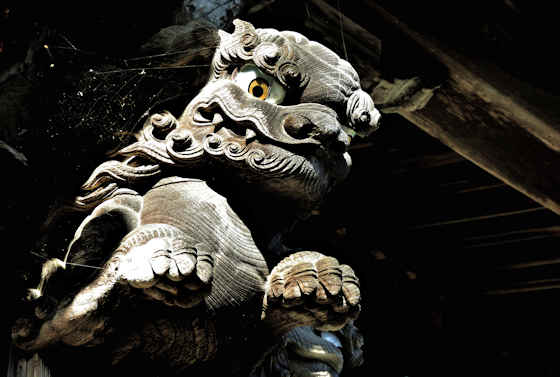I suspect that we all have specific images or scenes that encapsulate our experience of Japan. While an icon is usually a visual image that has a very broad or near-universal meaning, Mount Fuji as icon of Japan for instance, for many of us something more personal and related to our own environment and experience is more iconic.
For me, one of the defining images of Japan is of red-bibbed statues set in a green, mossy background, as I encountered behind Tozenji Temple. The first two photos were taken from Hasami Shrine next door, suggesting that the sacred spring behind the temple was also shared by the shrine.
A signboard at the temple now proclaims this to be a "power spot", a term that seems recently to be applied to just about anywhere. When I first came to Japan I noticed that the moniker "powaa supoto" was applied to mostly sites connected to imperial myth, but now is very widespread and applied to many sacred springs and sacred trees etc



































































